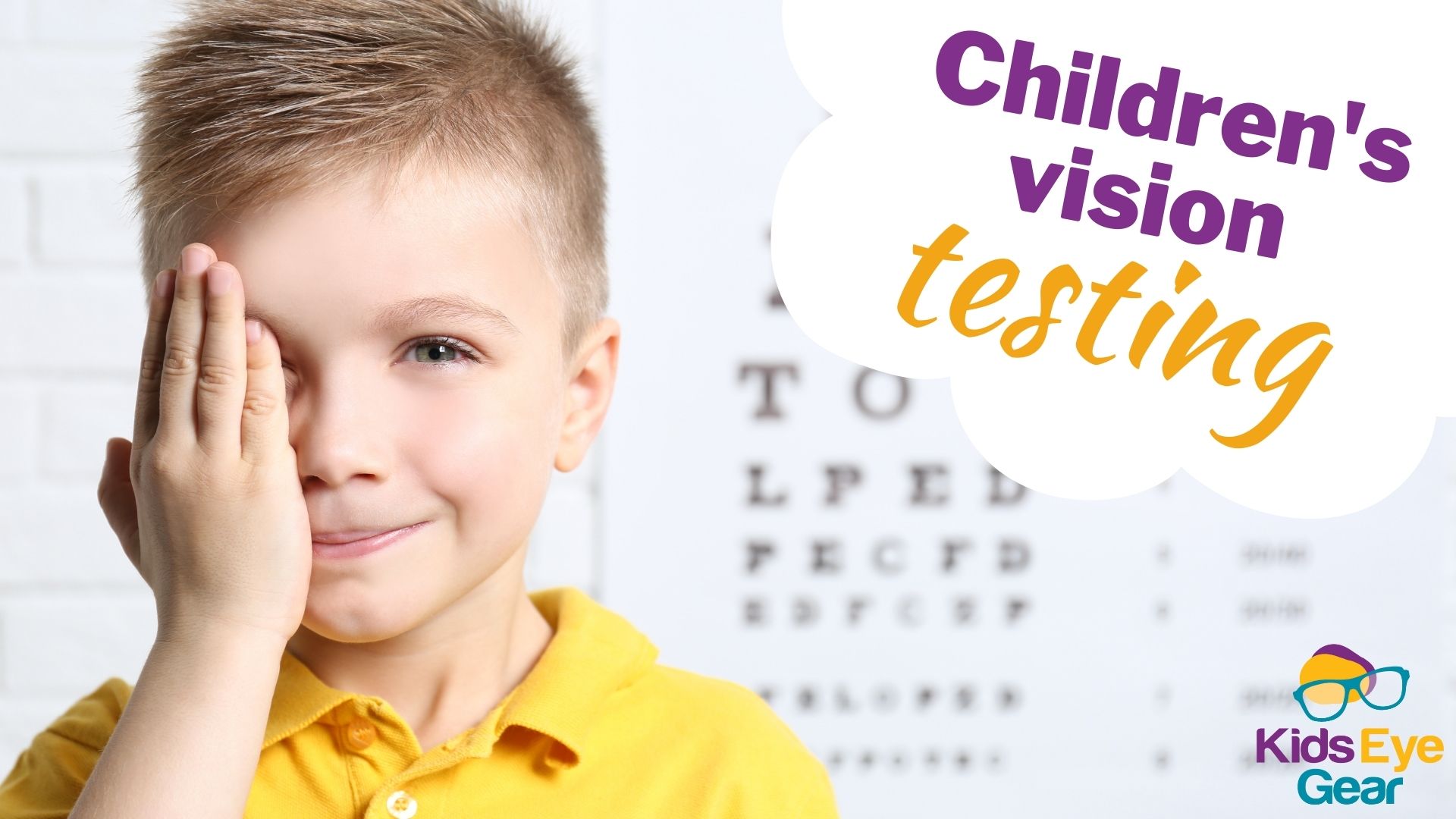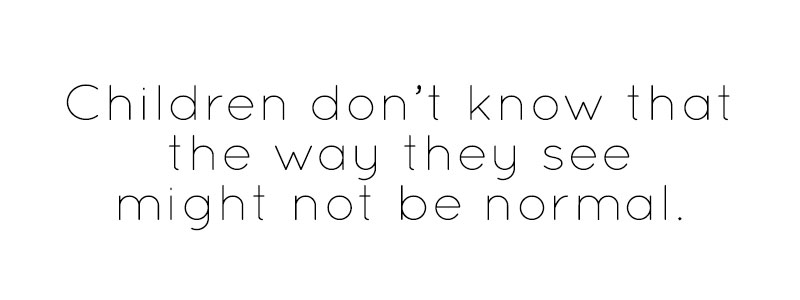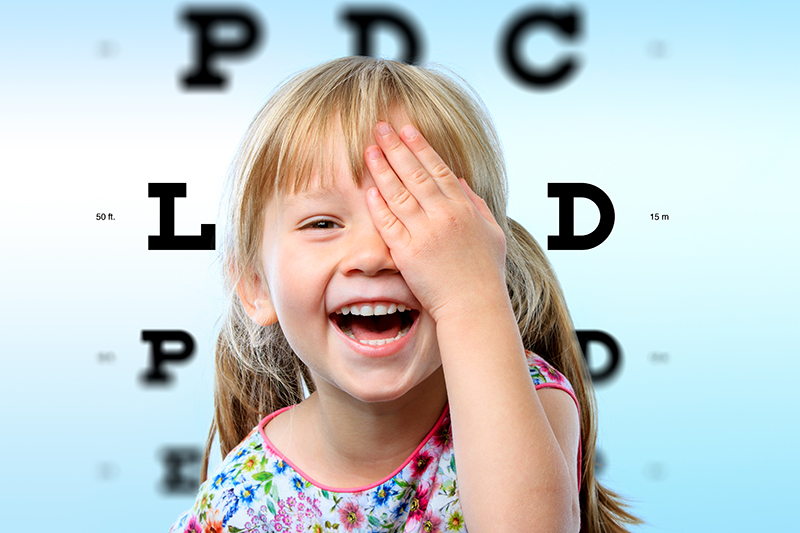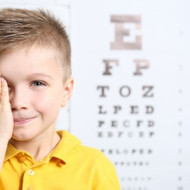Should I get my child's vision tested?
20th Jul 2020

My child doesn't need an eye test......do they?
I was speaking with a friend a few days ago and she was telling me about how her 8 year old son was having problems at school – with reading, concentrating, and was having some behavioural problems. I asked whether he had ever been to have his eyes tested and it turned out he hadn’t. In fact, she hadn’t even thought about it, despite having an older child who had had his eyes tested years before. I'll be honest with you - I was shocked. Admittedly I’ve been wearing glasses since I was nine years old, so optometry is very familiar to me, even without Dane’s issues.
1 in 5 children have an undetected vision problem
But it got me thinking about all the kids in Australia who might not have ever had their eyes examined – and what potential problems these kids are facing not just at school but in life. Optometry Australia says that one in five Australian children has an undetected vision problem or requires ongoing assessment, which is frightening - and easily fixed. According to the Our Children's Vision organisation, 63% of vision problems in the 0-14 age group are fixable with an eye exam and a pair of glasses. All it takes it getting our kids to the optometrist.
Children don't know what they see isn't normal
When our children are born, their eyes are tested in the first few days of their lives. Along with their hearing and general health, our babies are given a quick test and if nothing is flagged then they will most likely spend the next few years of their lives completely out of the radar for vision problems.

It takes a professional to identify and diagnose vision issues in children
The reality then is that, unless you’re a family with a child with vision issues, many children don’t get their eyes tested until they get to school and a teacher might notice that something isn’t quite right. The worrying thing about this is that children don’t know if what they see is what is ‘normal’. What they see is their reality – if things are blurry, they don’t know that they shouldn’t be. If words or pictures move on a page, they don’t know that this shouldn’t be happening. It takes a professional to identify and diagnose vision issues in children.

When should children have their eyes examined?
So when should children have their eyes examined? Optometry Australia recommends that Australian children should have an eye exam before they start school – so generally the age of four. With this in mind, we as parents can be looking for a variety of signs that might suggest our kids need to go to the optometrist even earlier.
Headaches
Headaches can be associated with many vision problems. If your child is experiencing a lot of headaches, especially after reading, watching television or playing on screens, it’s time for an eye test.
Squinting
Squinting eyes is a clear and fast indicator for vision problems. Does your child squint to look at things that are near or far? When holding a drawing are they moving it closer and farther away to try and focus? Best to head to the optometrist. All that squinting can lead to headaches too.
Complaining
Kids complain a lot, it’s true. However, if you feel there is excessive complaining about the same issue regarding eye sight, head problems, or not wanting to participate in games that involve reading or eye coordination, best to check it out. It could be the eyes.
Trouble at school
One of the most common ways in which parents discover their kids have vision problems is at school. Often delayed reading or a dislike of reading can be linked to poor eye sight. Short attention spans and poor behaviour can also be an indicator of trouble seeing. Imagine how engaged you would be in the classroom if you couldn’t see what your teacher was showing you! If your child seems to be falling behind in the usual school work and you can’t seem to figure out why, start with an eye test.
Eyes turning
Misaligned eyes are a pretty big sign that there is a problem. One eye turning in or out, while the other looks straight is called strabismus and needs to be treated.
Head tilting
Noticeable head tilting or head turning when trying to look at something can also indicate problems. Weirdly enough, Dane started doing this when he was about 9 months old and it turned out his contact lens prescription needed changing – so it still applies even with kids who already have known issues.
Irritated eyes
Frequent blinking, red or watery eyes and rubbing eyes can also indicate there might be a problem. Obviously if it’s just a one off thing there might not be an issue but if it persists, definitely get it checked out.
Family history
Do you have glasses? Does your partner? Aunts or Uncles who wear glasses or any other family members with vision problems are a good indicator that your child’s eyes should be tested… Like father, like son, right?

Where should you go to get your eyes tested?
All optometrists are qualified to test children, so your local OPSM, SpecSavers or independent optometrist is a great place to start. There are also optometrists who have a special interest in pediatric optometry – a simple Google search will point you in the right direction. Optometrists are able to identify and diagnose a whole variety of vision issues and if there are serious problems, may refer you on to a specialist (ophthalmologist).
If you’ve found this article because you already have a child with vision issues, you’re probably right on board with getting your kids’ eyes tested – even if you have other children who might not have issues. But what about your friends and family? I took it for granted that everybody knew about kids vision testing – and that everybody did it. But it turns out, that’s not the case. Let’s spread the word about childhood vision testing so we can help all children see the best they can and be the best they can be.

